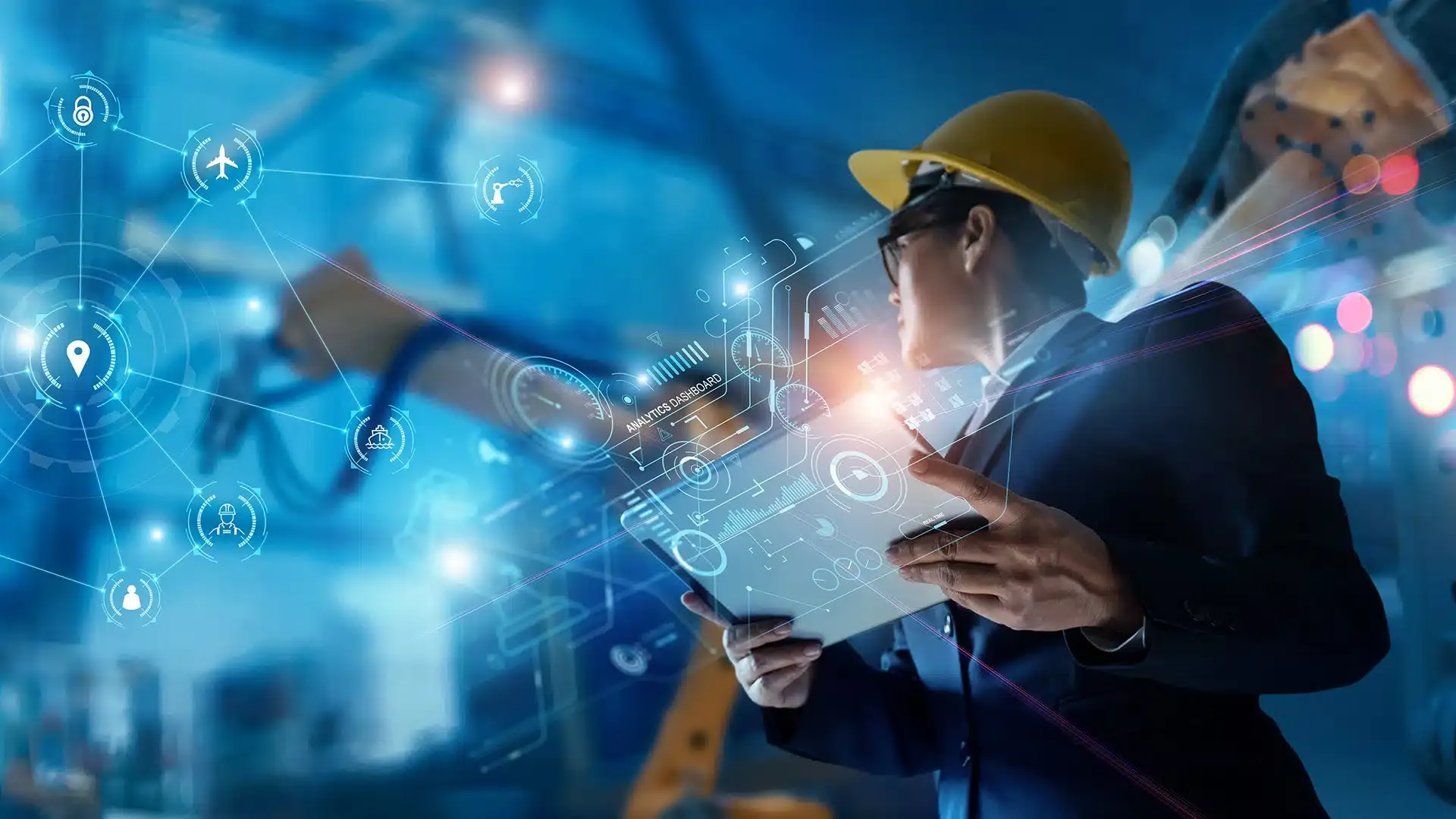Augmented Reality for Better Decisions in Smart Manufacturing

Traditionally, decision-making across industries has relied on human input. However, as technology gained wider traction, businesses began incorporating technology into their processes. It is important to note that technologies are merely tools, and their significance lies in how they are utilized and the impact they have. Augmented reality has revolutionized the way data is collected, manipulated, and analyzed. By collecting data and generating clear and understandable 3D modules superimposed on the real world, augmented reality has become a prerequisite for the manufacturing industry. It provides real-time performance data at a glance, allowing manufacturers to visualize mass data sets, identify trends, and conduct analysis that greatly influence decision-making. Augmented reality grants access to multiple data points in a single view, empowering manufacturers to make more informed decisions and increase efficiency in their processes.
The visual representation of data empowers workers to view tendencies and gain contextualized information and insights into equipment performance. This accelerates problem-solving and helps optimize the entire manufacturing process.
Improved Product Development
One area where augmented reality proves beneficial is in product development. Manufacturers have to consider various factors, such as technological advancements, regulations, increased customer expectations, shorter time-to-market, and lower costs, while developing a product. Augmented reality expedites the entire process by allowing manufacturers to iterate their designs virtually from the idea to the concept stage, eliminating the need for costly prototyping. The enhanced visualization of products helps prevent defects during the production stage and enables effective anomaly detection and resolution. Errors and modifications can be addressed at the initial stage, reducing the number of iterations and factory returns during product development.
Effective Machine Maintenance
Augmented reality also plays a crucial role in machine maintenance. Real-time daily monitoring of machinery through augmented reality helps predict potential breakdowns or failures. This allows for quick diagnostics, faster repair, and recovery. In cases where damage is extensive, augmented reality facilitates faster decision-making regarding rectifying or replacing the machinery. Additionally, manufacturers can connect and collaborate with experts from around the world to address and repair issues together. This fosters continuous production and ensures non-disruptive performance. Augmented reality provides a 3D representation of specific elements, enabling manufacturers to deliver products to the market faster and with better performance. Furthermore, AR-enabled instructions assist workers in predictive troubleshooting, minimizing rework and streamlining complex assembly tasks.
Speedy Manufacturing
In manufacturing processes with a high number of components, complex assembly can lead to increased errors. Augmented reality proves to be beneficial in such scenarios. AR-guided interactive voice-over work instructions in the assembly process make it faster and error-free, alleviating pressure on workers. Augmented reality applications provide workers with convenient, hands-free, and voice-controlled manufacturing guidelines, saving time otherwise spent searching through multiple spreadsheets. This allows for faster access to resource materials and enables workers to focus more on their surroundings and critical tasks.
Logistics and Warehouse Management
Augmented reality also finds applications in logistics and warehouse management. With augmented reality glasses and other hardware, manufacturing workers can effectively organize goods and equipment in warehouses. Augmented reality glasses guide workers through the warehouse area, enabling them to locate and select necessary items from a multitude of stored objects. Workers can quickly scan data, retrieve and upload items, reducing warehousing operation costs, improving delivery time, and minimizing damages caused by improper cargo handling or loading.
Field Customer Support
In terms of field customer support, augmented reality eliminates the need for multiple technician visits. Traditionally, onsite customer support required technicians to run diagnostics, order spare parts, and perform replacements or repairs, which often resulted in delays. Augmented reality enables customers to connect directly with technicians or maintenance personnel, regardless of their physical location. It offers real-time technical support with personalized instructions in a remote working environment, resolving issues faster without requiring a physical visit.
Training and Upskilling
Augmented reality (AR) facilitates the simulation of real-life activities in a semi-virtual environment, enabling manufacturers to execute activities and create specialized contexts without physical equipment and materials. By using specialized augmented reality devices and applications, manufacturers can assist both new and experienced workers in training and acquiring new skills. This technology allows workers to be trained safely and effectively in crucial manufacturing processes, as well as in operating expensive and complex machines and equipment.
Augmented reality has proven itself to be a powerful catalyst for the manufacturing industry, and its usage is expected to become widespread. Organizations can leverage augmented reality to gain a strategic advantage, which in turn affects the decision-making process. This technology provides businesses with the ability to comprehend how they will perform in different future scenarios. By harnessing augmented reality, manufacturers can enhance their decision-making capabilities, uncover new business opportunities, gain a competitive edge in their workflows, establish a safer working environment, and deliver high-quality products.




